SUNGKYUNKWAN UNIVERSITY (SKKU), SEOUL, KOREA
- Professors Kyusung Lee and Moonjae Lee's Team Publish Research About Enhancing
the Clinical Experiences of Patients with Enlarged Prostates - Professor Younghee Lee Succeeds in Synthesizing 4-Layer Single Crystal Graphene
- Alumnus of SKKU Dong-Hyuk Shin Publishes Research Results on COVID-19
- Professor Seongho Park's Team Analyzes New Plasmonic Nanoframe Particle Scheme and
Optical Characteristics - Professor Joo Sang Lee's Research Team Proposes a New Paradigm for Immunotherapy
- Professor Gira Yi Produces Diamond-Structure Photonic Crystal by Imitating
Enzymatic Conjugation

A co-research team led by Professors Kyusung Lee and Moonjae Lee from Samsung Advanced Institute for Health Sciences & Technology (SAIHST) has published research about enhancing the clinical experiences of prostate enlargement patients in the Journal of Clinical Medicine.
According to the research, younger patients are likely to have more dissatisfactory clinical experiences than the control group as well as patients who are confined to beds. On the other hand, patients who have a higher education level and subscribe to healthcare services are likely to have less dissatisfactory clinical experiences.
The team thus concluded that to reduce the dissatisfactory clinical experiences of the patients exact and precise information should be given to the patients. Preventive education for the patients who have chronic diseases like prostate enlargement helps as well.

Professor Younghee Lee from the Department of Energy Science has succeeded in synthesizing 4-layer single crystal graphene through joint research with Busan University and Samsung Advanced Instituted of Technology.

The team focused on synthesizing high-carbon-soluble copper alloy to develop Copper-Silicon (Cu-Si) alloys. They put a copper circuit on the quartz (SiO₂) tube of a chemical vapor disposition device and treated it by heating it with a high temperature (900°C). Through this process, the silicon of the tube sublimates, making Cu-Si alloys.
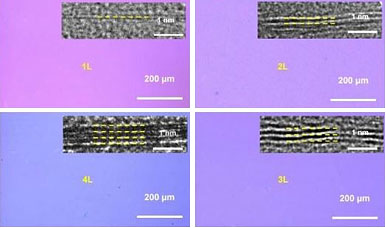
Prof. Lee's procedure adds methane gas to the circuit. The carbon atoms of methane gas and silicon atoms of the quartz tube form a flat Silicon-Carbon (Si-C) layer on the surface of the copper alloy. The layer controls the carbon solubility of the copper alloy.
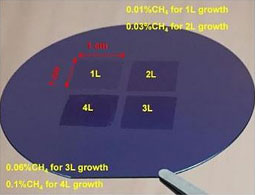
A circuit made using Prof. Lee's procedure can synthesize flat 4-layer graphene and can control the number of layers by controlling the concentration of methane gas. This is the first research study that synthesized high-area and high-quality multi-layer graphene.
"This research is meaningful because it reveals a new way to form multi-layer-flat graphene by synthesizing copper-silicon alloy at high temperatures unlike the existing vapor deposition way," said Prof. Lee.
The research was published in Nature Nanotechnology (IF=31.538) on July 28, 2020.

An alumnus of SKKU's Department of Biological Sciences (Undergraduate '07, Master's '12, Ph.D. '17), Dong-Hyuk Shin, published research results on COVID-19.

Korean scientists and overseas residents in Germany found a treatment that halts the replication of the COVID-19-causing SARS-CoV-2 and restores immunity functions.
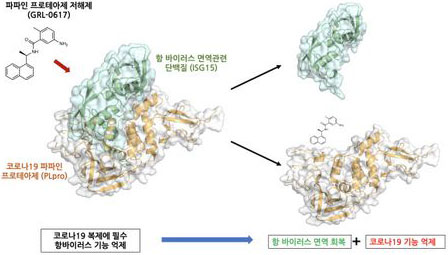
Dong-Hyuk Shin has been working as a postdoctorate researcher at Max-Planck Institute since 2017. Dong-Hyuk Shin and the research team of Prof. Ivan Dikic in the Max-Planck Institute's findings entitled "Blocking of viral replication enzymes to restore immune function" were published in the journal "Nature".

Professor Seongho Park's team has published four related articles about overcoming the limitation to gain a powerful Raman signal in international journals.
The team has developed a dual nanoframe structure with a large "Hot Spot Area" that enhances short-distance electromagnetic fields. The team found the different ways chemical reactions occur and designed a precise multi-level compounding procedure to synthesize the structure. The research was published on December 2019 in Nature Communications.
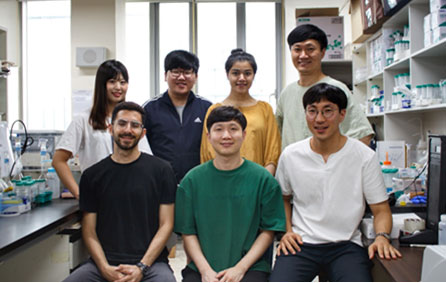
The team also tried to draw a Raman signal of the analyte in a single nanite particle with a precise nanite particle structure plan with Surfaced Enhanced Raman Scattering (SERS). The team found that enhancing the electromagnetic field hot-zone that formed in the golden dual nanoframe guides a remarkable Raman signal from single nanite particles. This research was published in both Nano Letters on May 2020 and the Journal of the American Chemical Society on July 2020. The research was also selected as a spotlight paper in the Journal of American Chemical Society.
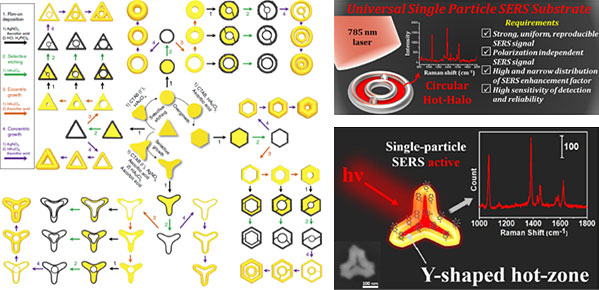
Lastly, the team produced 3-dimensional structures that connected 6 gold spherical nanite particles in a metal bridge by using a nanoframe structure. The research was published in the Journal of the American Chemical Society on September 2020.

Developed combined immunotherapy using cancer patient gene data along with the National Cancer Center in the USA and the Wiseman Institute of Science in Israel
Immune checkpoint inhibitors help people's immune systems recognize and kill cancer cells. Unlike anticancer drugs, they have been expected to help people make full recoveries and brought about a new turning point in cancer treatment when the Nobel Prize in Medicine was awarded in 2018. However, more than 50 percent of cancer patients still do not respond to immune checkpoint inhibitors.
In response, Professor Joo Sang Lee's research team, along with Eytan Rupin's research team at the National Cancer Center in USA and Aylet Erez's research team at the Wiseman Institute of Science in Israel, have discovered new ways to make immune treatment effective in cancer tumors that are known to be ineffective in immunotherapy.
The research team found genetic codes that distinguish between patients who immunotherapy treatment is effective on and those in which it is not. These genetic codes help select patents who respond to immunotherapy and can make an effective treatment by converting their genes' that do not respond to immune checkpoint inhibitors.
Professor Lee said, "This study presents a new paradigm of immunotherapy in which the genetic codes of patients which immune checkpoint inhibition therapy is ineffective on can be converted. If the research results accumulate in the future, they will provide hope for many cancer patients and medical workers."
This study was published in the global journal "Nature Cancer" on August 31 (Mon).

Professor Gira Yi's team, together with New York University, successfully induced "enzymatic" selective combination by shape in a nanoparticle, making a diamond structure.
The diamond structure can perfectly confine lights or controls, which means it can be used in ultra-high-efficient solar panels or to develop various optical elements like micro-sized lasers.
The diamond structure photonic crystal that the team made is similar to a carbon diamond structure; the array of nanite particles is the same as the carbon particles in natural diamonds. The research is meaningful because the diamond structure was useful for the photonic crystal when it was revealed in 1990 but the experimental realization of a diamond photonic crystal the size of wavelengths of light was not be made until now.
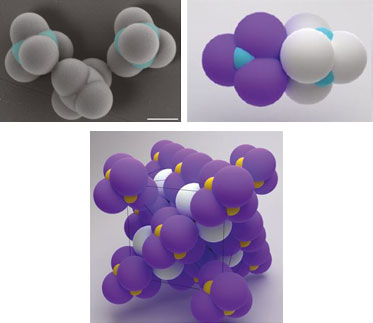
The diamond crystal structured photonic crystal has a large band gap, so it is possible to control the lights in three-dimensional space in various ways.
Professor Yi said, "This research is the materialization of a three-dimensional diamond photonic crystal which was originally impossible. I anticipate the structure can be widely used in solar panels, displays, lasers, sensors, and optical computers in the base of the photonic structure."
The research was published in Nature on September 24, 2020.























